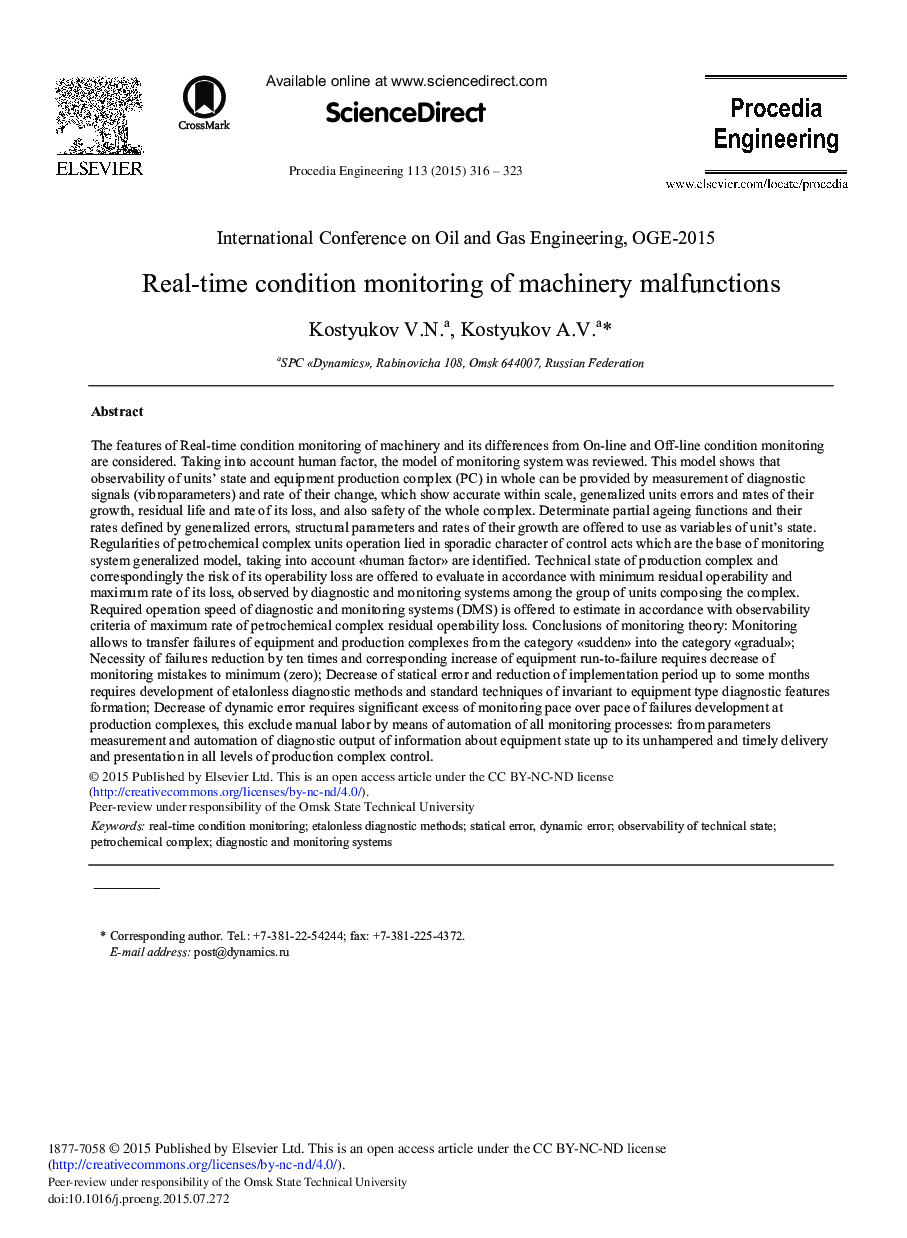| Article ID | Journal | Published Year | Pages | File Type |
|---|---|---|---|---|
| 856220 | Procedia Engineering | 2015 | 8 Pages |
The features of Real-time condition monitoring of machinery and its differences from On-line and Off-line condition monitoring are considered. Taking into account human factor, the model of monitoring system was reviewed. This model shows that observability of units’ state and equipment production complex (PC) in whole can be provided by measurement of diagnostic signals (vibroparameters) and rate of their change, which show accurate within scale, generalized units errors and rates of their growth, residual life and rate of its loss, and also safety of the whole complex. Determinate partial ageing functions and their rates defined by generalized errors, structural parameters and rates of their growth are offered to use as variables of unit's state. Regularities of petrochemical complex units operation lied in sporadic character of control acts which are the base of monitoring system generalized model, taking into account «human factor» are identified. Technical state of production complex and correspondingly the risk of its operability loss are offered to evaluate in accordance with minimum residual operability and maximum rate of its loss, observed by diagnostic and monitoring systems among the group of units composing the complex. Required operation speed of diagnostic and monitoring systems (DMS) is offered to estimate in accordance with observability criteria of maximum rate of petrochemical complex residual operability loss. Conclusions of monitoring theory: Monitoring allows to transfer failures of equipment and production complexes from the category «sudden» into the category «gradual»; Necessity of failures reduction by ten times and corresponding increase of equipment run-to-failure requires decrease of monitoring mistakes to minimum (zero); Decrease of statical error and reduction of implementation period up to some months requires development of etalonless diagnostic methods and standard techniques of invariant to equipment type diagnostic features formation; Decrease of dynamic error requires significant excess of monitoring pace over pace of failures development at production complexes, this exclude manual labor by means of automation of all monitoring processes: from parameters measurement and automation of diagnostic output of information about equipment state up to its unhampered and timely delivery and presentation in all levels of production complex control.
